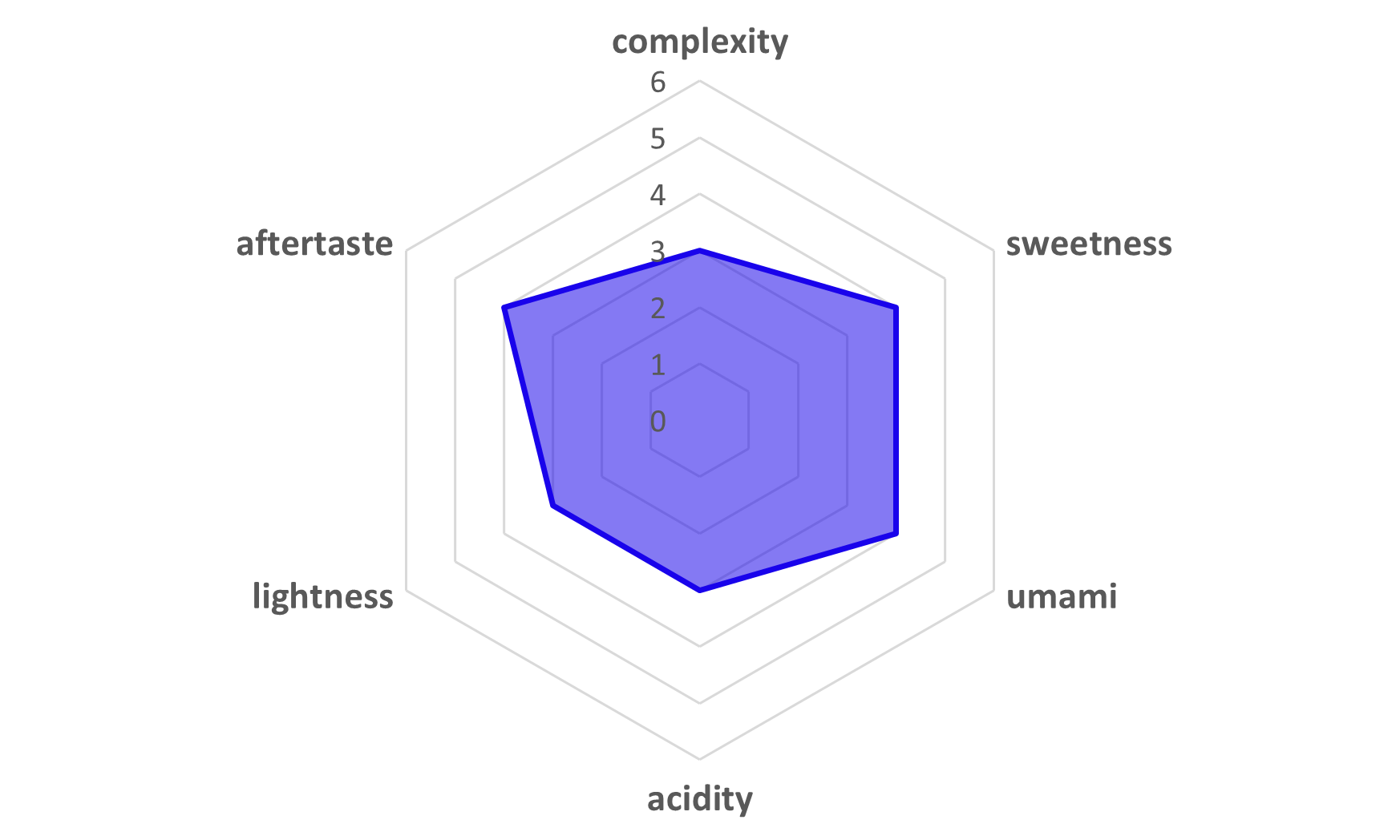N/A
un indicateur de la douceur ou de la sécheresse du saké. En général, une valeur négative indique la douceur, tandis qu'une valeur positive indique la sécheresse.
Expression numérique de la quantité totale d'acidité. Plus l'acidité est élevée, plus il est vif et corsé, plus l'acidité est faible, plus il est léger et doux.
Proportion de riz restant après le grattage de la couche extérieure. L'élimination de la couche superficielle permet de produire un saké à l'arôme unique et sans 'impuretés.
"The nose evokes the maillard of roasted rice and iron pots. There are also dry notes of straw and firewood, and nuances of young blue and washed cheeses. The attack on the palate is reminiscent of vermouth. It has a sweetness similar to that of matured shochu, but with the flavour of sake rice. Recommended served cold."
Professional French Chief & YUKARI Special Ambassador
"Overall, rather than the more intense fruit notes, the aroma is dominated by the green notes brought about by the alcohol and the steamy notes from the ageing process. There are also sweetnesses like custard cream, chestnuts, root vegetables like burdock root and cedar elements. Complexity increases as the temperature rises, with exotic notes reminiscent of cinnamon and Shaoxing wine. The palate has an impressive balance of strong alcohol and sticky, rounded umami. Serve at 50°C or on the rocks with 20 cc of water added to a 180 cc pitcher."
Sommelier of Sake / Sake Diploma & YUKARI Special Ambassador








